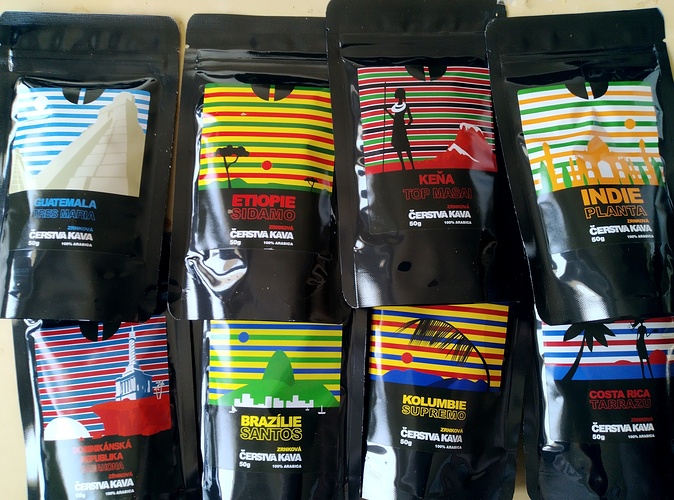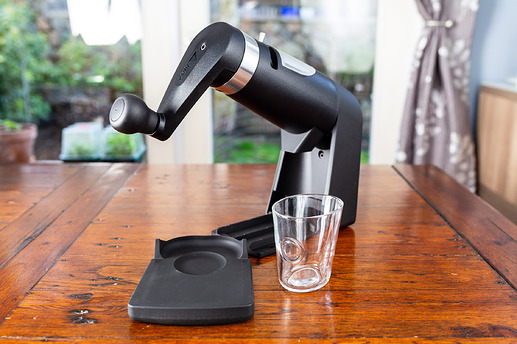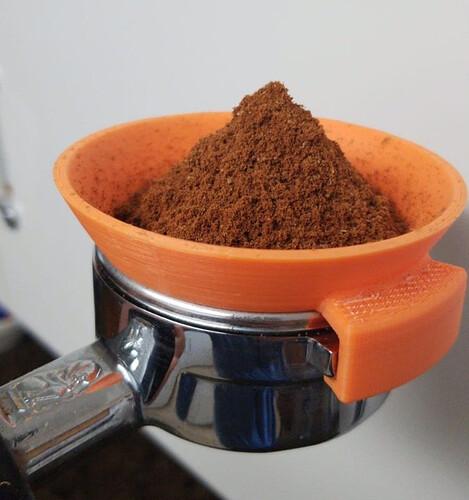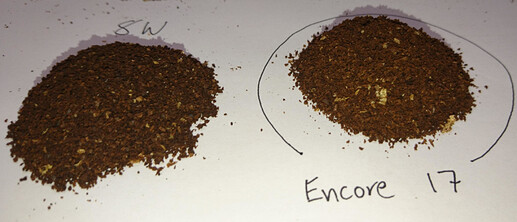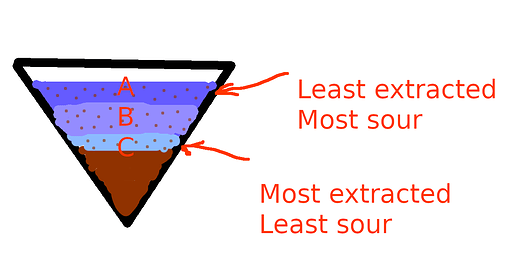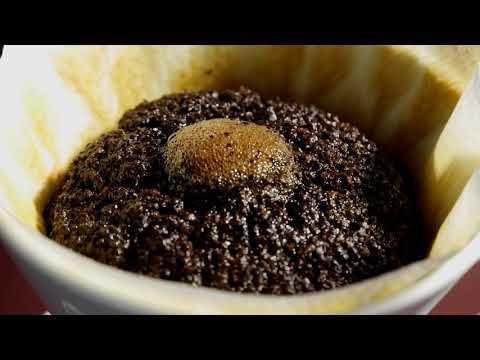I made a couple of cups this morning (in the aeropress) and set the kettle to boil and I do think it improved things a bit. I’m currently using some mid-tier beans from a local roaster I wanted to try out, and I had been pretty disappointed with them but these last cups were enjoyable. Not a blind test but promising.
I think I need to invert the aeropress next time. There’s no time to steep given that the water goes straight through the coffee and filter. I must have missed a step. That and I need to mess around with the coffee to water ratio.
That said, still a quality cup. Way cleaner than a french press and less time to prepare. Plus cleaning afterwards is super easy.
I think I need to experiment more with both but I’m leaning more towards the aeropress for days where I don’t have time to wait.
Yeah I’m doing it wrong. I put about 20 grams of finely ground coffee in, pour water in up to the 4 mark, let it steep for 2 minutes, plunged and basically got a ridiculously strong espresso cup. I added more water after the plunge and it still came out great.
Definitely need to let the water cool a touch to get the full taste though
I assume you’ll spend the rest of the day just making cup after cup.
I’m dealing with a migraine. So probably not.
But there’ll be some more experimenting. Guess I’ll have to cut down the amount of coffee to fit enough water into my cup.
I’m going home to my espresso machine Friday after being gone two months and drinking one cup kuerig every day. I can’t wait!
After struggling to get any consistency brewing a few different Ethiopias, I finally ripped this bag of Uganda natural from Happy Mug that’s been waiting in my freezer:
https://happymugcoffee.com/collections/roasted-coffee/products/uganda-natural-process
This came out beautifully through the V60 and is the most interesting coffee of the bunch. It’s more of a medium roast compared to the others all being pretty light. When I say interesting, what I’m talking about is separation and clarity. The problem I have with my setup and light roast single origins is that it’s really difficult to consistently pull out the specific tasting notes–when it actually does happen, it almost seems like magic. I have a theory about why this is happening that I’ll expand on in the next post (spoiler: it’s the grinder).
I’ll point out again that my unscientific observation is that my brewing is significantly better when I grind cold beans straight out of the freezer, and I’ve also (unscientifically) observed that there appear to be fewer fines when I sieve using the paper towel method. The idea that cold temp beans produce a more consistent grind quality is not my discovery and I think I linked the academic paper on it in here before.
I’m convinced enough that I bought a Vario with the Ditting burrs. Pay to see I guess. I went all the way down the rabbit hole over the past several months and don’t think there’s a cheaper way to get to next tier. After I buy the parts to convert it for the hyper-alignment mod I should be in under $400.
People have always recommended the Encore-type conical burr grinders for coffee brewing, but afaict that style of grinder is not well-suited for light roast single origin. I think it’s oudated/limited advice based on most people drinking medium to darker roasts (especially 10+ years ago). LRSO beans present a problem because they are physically harder while usually having a delicate complexity in flavor. The problem isn’t just fines but also boulders–in fact, I think it may be more related to boulders. Having read a bunch of those particle distribution graphs, it seems like conical burrs produce relatively more boulders than flat burrs, and I suspect this is where the big difference is: people generally describe flat grind profile as less acidic and more separated. Those boulders are “sour” and overpowering, and they mask the subtlety we’re trying to amplify from the 400 to 800 micron target particle range. That’s my theory anyway.
I’ve had a ton of LRSOs over the past several years, and the number of pots I’ve brewed that were absolutely incredible with separation and clarity have been a minority. What tends to happen is they come out tasting “fine” yet mostly the same: fruity acidity but with no particular unique or interesting flavors. Conversely, the medium and darker roasts I’ve brewed tend to have the clarity and tasting notes. The good news is that I’ll be able to brew side-by-side comparisons now.
The fatal flaw with the Fellow Ode is that it can’t grind fine enough for V60 with the stock burrs. The SSP burrs are $180 upgrade ($479 total) and may put undue stress on the motor. Fellow is working on a v2.0 burr that should be out by “late summer” so that might be the best option in the near future for people who don’t want to mod.
There’s another intriguing option I should mention: the Orphan Espresso Apex.
Yes, that is a $500 surface-mount hand grinder with ghost tooth burrs. Yes, you have to disassemble it for deep cleaning and gearbox/bearing oiling. Yes, it can take up to 4 minutes to grind a relatively modest amount of light roast beans. Yes, all of that is preposterous. But apparently it produces grinds that are on par with the EK43, and a lot of people on HB are in love with it. It’s actually an impressive piece of equipment with rock-solid construction, there’s just no way I’m willing to put up with that much inconvenience at that price. If you have the patience and a surface to bolt it to, it’s probably impossible to beat for the money.
Here are your options for actual upgrades for under $350 (including tax and shipping) as of today:
(1) Fellow Ode w/ Mythical Unicorn Version 1.1 burrs
Some users have reported receiving a v1.1 burr that grinds slightly finer than the launch version 1.0 and can now grind V60. It’s not exactly clear how to get this or if all new units are shipping with this burr set now. You should contact Fellow I guess. I still think Aeropress is probably not possible which could be a killer for you. Other option is wait for v2.0 described above.
(2) Buy a used / refurbed Vario as cheap as possible, preferrably one that already has the steel burrs. If not, the steel burr set costs $60 + tax/ship from Baratza. Expect to pay $250 to $300 w/o steel and up to $350 if it has steel.
(2)(b) That alone should be pretty good by itself, but the following is what makes (2) more interesting imo. First, expect to pay another $50 + tax/ship for the metal Forte parts that allow for hyper-alignment. Then take the red pill and enter this wormhole:
https://www.home-barista.com/grinders/baratza-vario-super-alignment-owner-experience-t60764.html
- In the mean time, the Vario has gotten the important bits from the Forte, which are, the metal grind chamber and lower burr carrier, and the threaded metal upper burr carrier. Pretty big news.
BUT
… nowhere near the biggest news…
2a) It now has a Kafatek level, “hyper alignment”, which ostensibly means that any performance differences in the cup are down to burr differences
2b) And it’s easy. Almost a joke, it’s so easy. Two of this family in a row, didn’t even need shims to obtain 5 microns of runout. Even double that runout is world class alignment.
Here’s a preview of this machine’s technical capabilities once aligned. I know: this is espresso and we don’t drink espresso, but he’s simply showing how absolutely ridiculous it is when aligned properly. The recommended use is brew for steel burrs, not espresso.
oh fuck you’re gonna make me (spend a shitton of money on a grinder)
This was an extremely useful video
Obv I’m gonna TR the Vario and modding process so maybe wait for that first.
Since he’s in the coffee business, I’d love to hear more about these preferences and how they correlate so I can get a better idea of which coffees to suggest to people who hate the stuff I drink. I’m pretty clearly on the extreme end that he describes preferring coffees that are floral, delicate, fruity, acidic, and weird. The one that really baffles me is natural process hate because I love the “fermented” fruit flavors and think they are some of the most interesting coffees I’ve ever had. I wonder if that is a taste bud or sensory thing because he’s right, people that dislike naturals seem to really hate them.
Man a good iced Vietnamese coffee hits the spot. It tastes like a coffee dessert when it’s served cold.
Now I gotta try to make it using the aeropress. Get a larger serving and compare it to the phone filter. I wonder how it’ll taste.
EDIT: Next time I’ll try to pour hot water and add ice afterwards instead of pouring cold water. Wonder if it’ll change the taste. I suspect that it’ll be stronger if I do that but not as cold.
First impressions of Vario:
Build quality is significantly better than the Encore. You can really feel the price difference side by side. It’s also quieter with less offensive grinding noise. Even the adjustment tools are of surprisingly high quality. One negative is that it popcorns much more than the Encore for single dosing which is something I will need to address.
Grind quality: TBD. The grind adjustment system is foreign to me so it’s gonna take a few pots to dial in. I brewed two V60s today and missed it on both sides. Baratza’s default rec for V60 was way too fine for this machine–choked the filter at the very end of the draw with mud on top resulting in the blackest pot I’ve ever brewed. Still better than Starbucks. I dumped it and tried to match Encore by grinding small piles. Terrible photo incoming:
The 8W (left) is a bit courser and 7W (not pictured) was finer, so I split the difference. It drained with almost no resistance at all, probably 2:30 using a slow pour technique, whereas I’ve been getting around 3:30 with that Encore setting. Obviously sour, but it tells me that the correct grind will appear noticeably finer which seems to indicate there isn’t as much powder in the Vario grind (good and expected).
V60 observations
For @pvn, @EmpireMan, and anyone else doing V60-style pour overs:
I’ve been playing around with the different V60 methods trying to figure out which aspects of the process actually matter. The thing that drives me bananas is how all of these techniques seem to have multiple magical hand waving steps. I divide the pouring methods into three general types:
(A) Hoffman/Perger/Rao method: A lot of water poured in at once.
(B) The 4:6 method: A series of divided pours that drain completely.
(C) Osmotic flow / Cafec method: Very slow pour down the middle.
Here is my observation/theory: (A) is basically an immersion brew. You’re pouring in a ton of water faster than it can drain, so the coffee is floating around like a French Press. (B) is not as much of an immersion because you’re pouring less water in at once. (C) is the least level of immersion because you’re matching the pour to the drain rate and the water is about the same height as the coffee bed throughout.
I encourage you to try (A) and (C) back to back with the same coffee and grind. I had this idea after tasting my bloom water for the first time out of curiosity. It was very potent, complex, and sweet with the acidity being less dominant than the final brew results I was getting with (A). Pouring slowly and keeping the water level very low in the cone produces brews that taste very similar to the bloom ime. It may eventually require changing the ratio or grind size for strength.
Here is the Cafec guy explaining “osmotic flow” which is his way of saying “not immersion.” This method has been around forever aka Japanese style of pouring down the middle. Still feels like some very precious claims are being made and/or something lost in translation. The key takeaway is keep the water level low throughout.
I’ve always wanted to taste the bloom water but it feels naughty
